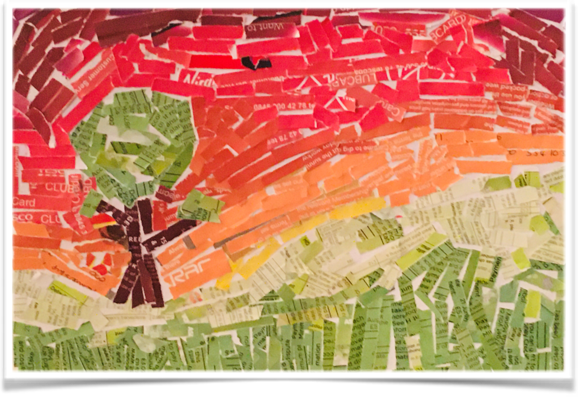Keep it Happy – Overriding the Autopilot!
We breathe all the time, but we rarely take time to breathe - the difference is more important than you might think. The way we breathe changes how we feel, so taking control of it, is incredibly powerful. Written by trainee Ollie Coach, Deborah Stephenson

“Breath is the link between mind and body” – Dan Brule
I’m so glad you’ve taken the time out to read this today, so before we begin, to make even more of this time, I invite you to take a deep breath…
Let’s try that again.
A proper, deep, lung filling breath.
Great.
And now treat yourself to a few more if you choose, because although we breathe all the time, we rarely take time to breathe – the difference is more important than you might think.
Breathing is pretty special… it’s the first thing we do when we arrive into this world, and is fundamental in keeping us alive, but breathing is also special in another way. Did you know it is the only bodily function you can do consciously as well as unconsciously? That’s because it is controlled (stick with me for the science bit!) by both the voluntary nervous system and the autonomic (involuntary) nervous system. We can’t take control of our blood stream or digestion, or do goose pimples on demand, but we can control our breath, which is both amazing and lucky, because being able to override the breathing autopilot can help us through the toughest of situations.
Why? Because the way we breathe changes how we feel, so taking control of it, is incredibly powerful.
We don’t need to remember to breathe, our brain is programmed to do that for us. It won’t forget, and that’s great, but all the brain knows, is that it must control the flow of air to regulate the amount of oxygen and carbon dioxide in our bodies correctly to keep us alive. Unfortunately, sometimes this autopilot approach is counterproductive.
We know that when we are calm and relaxed, our breath is slow, but when we are stressed or anxious, our brain senses a threat and triggers shallow, fast, fight or flight breathing to drive oxygen to our muscles in preparation for the battle or the chase. Great in caveman days, but less useful now, where quite often a threat is perceived rather than real. The brain doesn’t distinguish this and if we don’t end up running or fighting, then we don’t use the extra oxygen created. The imbalance causes symptoms of stress and anxiety, which starts the whole process again.
This is when we need to over-ride the system and take control.
But how do we switch from automatic to manual?
Just thinking about the breath and noticing how it feels in our body… our nose, throat, chest, shoulders brings it into conscious mode and gives us control. The aim is to pay attention to each inhale and exhale, slowing the breath down and breathing more deeply as if we are breathing to and from the stomach. My children like to call it Big Belly Breathing! It allows more air to flow into our body to balance the levels.
Researchers also believe that controlling our breathing like this (teeny bit more science…) triggers our parasympathetic nervous system, counteracting the sympathetic (fight or flight) system, and calming us down. The two systems can’t fire at the same time, so if you work to activate one, the other will stop.
Think of it as changing the points on a railway track. We head along the fight and flight line, anxious and stressed. The brain senses a threat and orders more oxygen, our breathing obeys, becoming fast and shallow and we increase speed along the fight or flight route. But our breath can control the points on the line. Shallow fast breaths leave us on the stressed track, but a long deep breath can switch the points sending the train off down the calmer parasympathetic line.
It doesn’t take long for deep breathing to work, but it’s good to practice because in moments of stress it can be difficult to hold that focus on our breathing. Anxious thoughts distract us, detaching conscious control and returning our breathing to autopilot, changing the points again and sending us back onto the fight or flight line. If we can return the breath to conscious thought, we can retake control and get back on track.
It need not take long – no one need even know you are doing it. I like to breathe in for a slow count of four, hold for 2, then out for a slow count of 5. A few rounds of this makes me feel calm, my mind clears and everything seems lighter. Give it a go perhaps? You may find a different pattern works better – it doesn’t matter as long as it helps you to breathe slowly and deeply.
The more you practice, the better you’ll get and the more you’ll be able to use it in times of stress to help calm yourself down. The good news is that we average between about seventeen thousand and twenty thousand breaths a day so there’s plenty of opportunity for practise!
The beauty is that you always have your breath with you so you can do this any time, anywhere… even on a cricket pitch. I know this because last week I was talking to my son about his bowling. He used to get quite nervous in matches which meant he didn’t always bowl as well as in practice, but this seemed to have changed. “Oh, I’ve been using that breathing thing you were taking about a while ago,” he said. “When the captain tosses me the ball and I know I’m about to bowl, I take some long deep breaths … and it really works!”
And there’s something else too…
You can use your breathing pattern to influence and change another person’s pattern.
Studies have shown that getting someone to take shallow, short breaths can bring on a state of anxiety or panic. I’m not for one moment suggesting you try that – it would be unkind, but it does show how influencing someone’s breath can change how they feel.
Last week I wrote about connecting and building rapport with people by matching body language, eye contact and tone, and that in rapport, people often mirror each other. This also happens with breathing and it can be quite powerful.
A nice way to use it is to calm a child at bedtime. If my daughter is worried about something or too energised to get to sleep, I slow my breathing, and stroke her hair in time with my breath taking some long deep sighs, slowing it down, and slowing the stroking, and slowing it more, and usually, after just a few minutes, her breath has slowed too, consciously or unconsciously synchronising with mine, and she is ready for sleep.
If you are with someone who is very anxious or stressed and their breath is quick and shallow, focus on your breathing. Consciously change the rhythm, slow your breath down, breathe more deeply… slowly… deeper… slower… watch what happens… you might be surprised by what you can do.
Deborah Stephenson, Ollie Coach trainee
I am an Ollie School trainee and a Director at an Independent Prep School for boys. I am a trained journalist and worked in BBC Local Radio for more than twenty years as a reporter, bulletin reader, news editor and programme maker. It was a great job, but I wanted to do something to support my own children’s wellbeing with a view to taking that on to support others and, in pursuit of a better work life balance, I resigned as the Assistant Editor of BBC Essex last year. Inspired by the Ollie School concept I was excited to be accepted for the training course and it has been a fascinating and enlightening and journey so far.
To get in contact with Deborah, email info@ollieandhissuperpowers.com
To find out more about Ollie and his Super Powers and how to become an Ollie Coach go to https://www.ollieandhissuperpowers.com/pages/about-us
Caroline Chipper
Director
Co founder of Subconquest Ltd, that trades as Ollie and his Super Powers. My many years of commercial experience is being put to good use managing the business side of Ollie, including working with our Ollie Coaches, and managing our contracts. In everything we do its about making a difference to those we work with. To find out more go to https://www.ollieandhissuperpowers.com/pages/about-us


